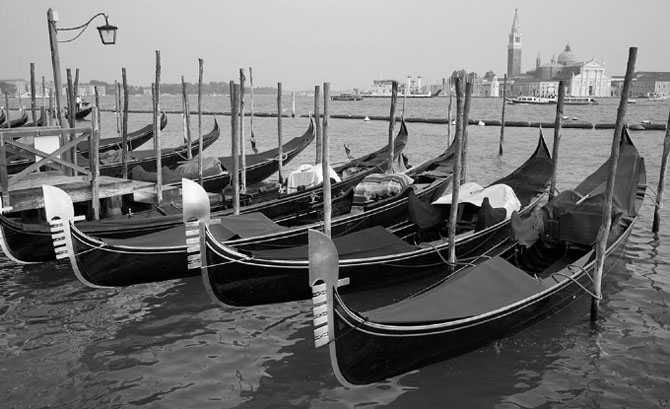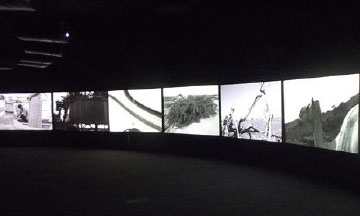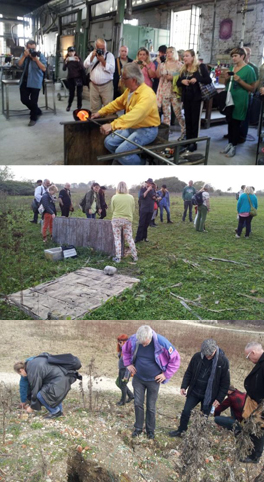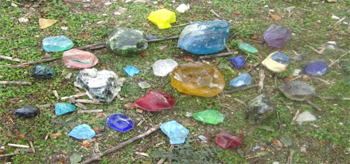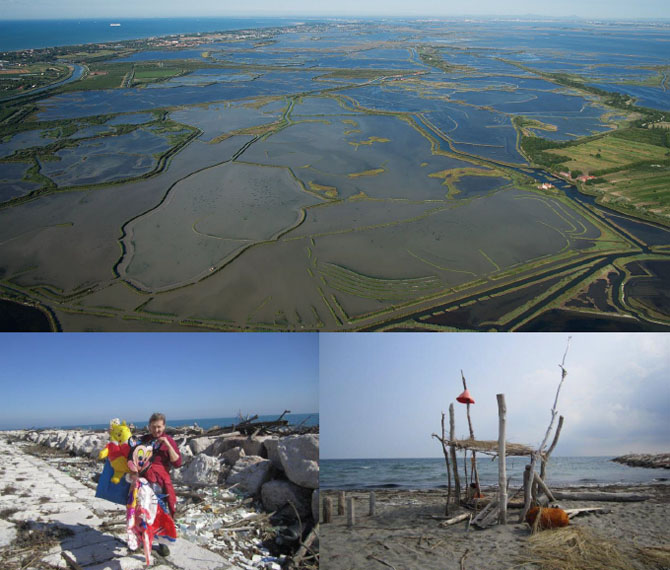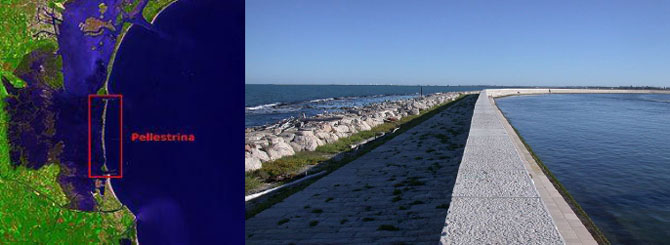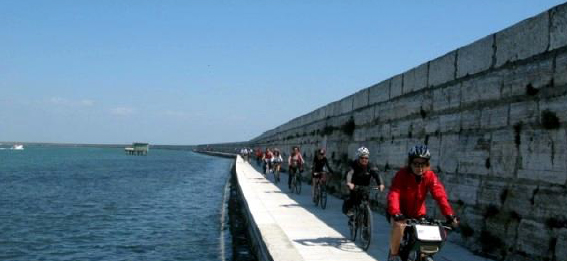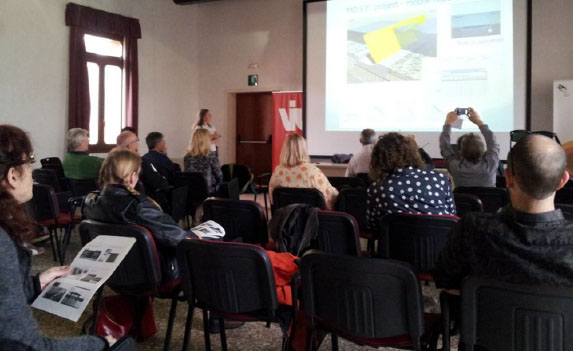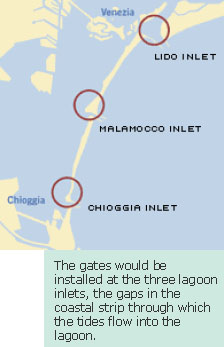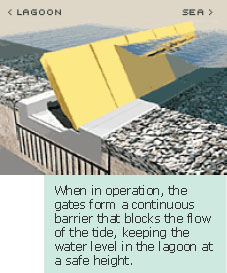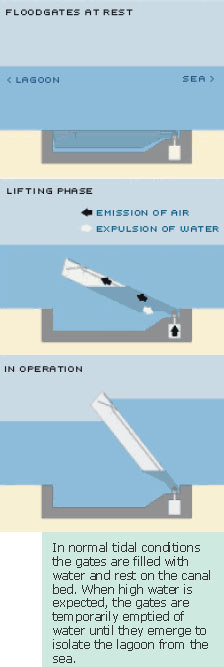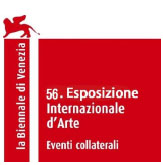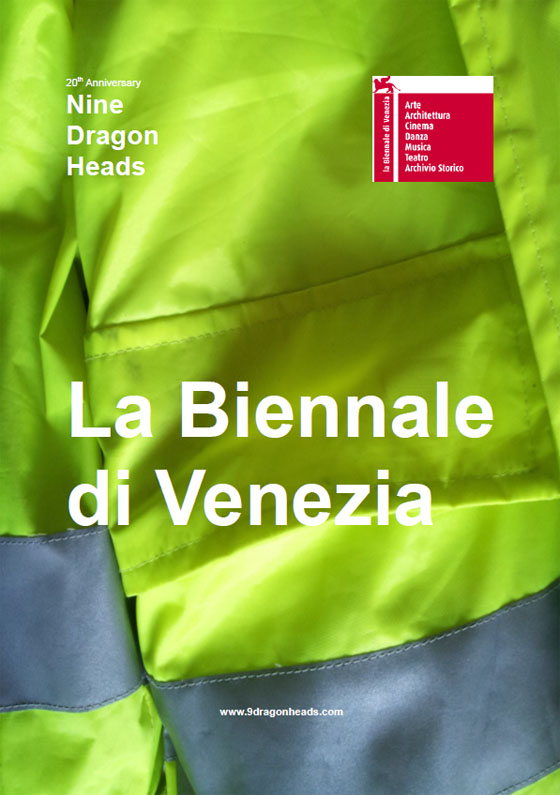
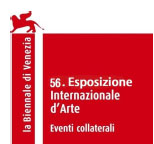
Jump into the Unknown
19th. April
22nd.June
2015
Venue
Palazzo Loredan dell'Ambasciatore
From the 3 Islands - Murano, Lido, Pellestrina
Venice University - San Servolo Campus /TEN center
Event
Open Air Symposium
Nature & Culture Survey
Exposition
Conference
Presentation
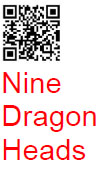
Introduction
Nine Dragon Heads aspires to generate positive environmental and spiritual legacies for the future. This is in a context where humankind benefits from manipulating and dominating its natural surroundings; regarding the natural environment as a target and challenge for conquest, a test of its ability to transform and possess nature.
Our desire and ingenuity to exploit and develop the natural environment through domination and control implies superiority. Reflecting on the history of the planet however, many species of all forms became extinct when the friendly environmental conditions that firstly nurtured their birth later changed and became hostile.
The question of when will humankind disappear hangs over us. No matter how 'special' we Homo Sapiens think we may be, we have to realize we are a part of the greater natural world and the product of a unique environment that supports our life.
How can we lead a life with understanding and respect for the world of nature? How can we maintain a life peacefully and fairly for the survival of mankind?
Nine Dragon Heads changes 'I' into 'we', a community of artists, who explore and re-consider the relationship and equilibrium between people and the natural environment.
Nine Dragon Heads joins with other communities to share their imagination, experience and ideas through creative art practices, to reveal and celebrate both diverse and common consciousness and to further co-operation.
Nine Dragon Heads aims to further greater understanding of human nature and the world through restorative creative action and engagement and in so doing aims to leave a healthier environment - the heritage of the future - to posterity.

Jump
into the Unknown
The Organization
Artistic Director
Park Byoung Uk
Board
Alois Schild
Annelise Zwez
Iliko Zautashvili
Jessy Rahman
Neil Berecry Brown
Susanne Muller
Commissioner
Magda Guruli
Vittorio Urbani
Kim, Jai Kwan
Project Manager
Ali Bramwell
Gabriel Adams
Docu Team
Denizhan Ozer
Enrique Garcia
Phil Dadson
Jeong Tae Gyu
Liaison
Charlotte Parallel
Inbok Trobos
Jayne Dyer
Park Jun-Ho
Pietertje Van Splunter
56th Venice Biennale Official Collateral Events
Nine Dragon Heads
Palazzo Loredan dell'Ambasciatore
Dorsoduro 1261, 1262, Venice
Jump
into the Unknown
"Jump into the Unknown" is an art project originated within the International Interdisciplinary Environmental Art project with a specific site and context relation, named Nine Dragon Heads.
The project, "Nine Dragon Heads", was initiated in South Korea by Park, Byoung Uk in response to the destruction of an important historical site in 1996, and evolved into an open interdisciplinary platform where artists from all over the world implement individual and collaborative art projects related to universal humanitarian, political, environmental and cultural issues. Working in a framework of thematic and multimedia formats Nine Dragon Heads unites artists from all five continents. This alone is a unique configuration, however, the characteristics of international diversity are not a mechanical combination.
The emergence of the environmental art initiative Nine Dragon Heads was inspired by concern over the natural, cultural, historical and archaeological landscape of South Korea in the first instance and coincided with a period of industrial rise and profound political change. Arising in the context of economic and infrastructural development of the country actively positioning itself on the global socio-political, educational, artistic and cultural scene. The subsequent twenty years of activity by Nine Dragon Heads has evolved against that specifically formative backdrop to investigate other transitional environmental, economic and political situations. Working in locations with transitional characteristics, that may be environmentally, economically and/or politically troubled, on important cultural, historical and geopolitical routes has become a particular feature of working within Nine Dragon Heads. It is noteworthy that Nine Dragon Heads is an inherently flexible model capable of responding perceptively and with focused spontaneity to the inevitably unexpected contextual conditions which occur within the immediate surroundings of each location.
At various times Nine Dragon Heads has worked on locations on the South Korean Peninsula and its islands, including the Demilitarized Zone (DMZ) and Joint Security Area (JSA) between the North and South of Korea. Other areas recently engaged include Bosnia/Herzegovina, the South Caucasus; Georgia, and Central Asian locations; Uzbekistan, Turkey, China, Tibet and Mongolia. Past projects have also taken place in Switzerland, Australia and New Zealand. Currently the caravan route of Nine Dragon Heads runs through the 56th Venice Biennale's Official Collateral Events, presenting an experimental art project space "Jump into the Unknown" in Venice, with a base in Palazzo Loredan. "Jump into the Unknown" is not just an exhibition theme, it's the motivating stimulus for alternative vision and the experimental mode of artistic activity embodied by Nine Dragon Heads. "Jump into the Unknown" in Venice reiterates a recurring structural specificity of Nine Dragon Heads - a form of open air practice that will engage three islands in the Venetian Lagoon (Murano, Lido, Pellestrina), accompanied by exhibition of working traces, artefacts and performances in the Palazzo Loredan dedicated to the creative possibilities connecting human and nature, art and environment.
Conceptually the exhibition "Jump into the Unknown" is elaborated in on-going laboratory mode, where individual works bear post-studio, experimental, or situational and performative character. The experience and materials gathered through numerous symposia and activities of Nine Dragon Heads (which also include workshops, theoretical panels, and conferences) both directly and indirectly form the content of "Jump into the Unknown". Participating artists don't aim to place full stops or answer all the questions, but look for the creation of a space where experimental open air and public art-practice results into ethical artistic message.
Against the background of its broader practice "Jump into the Unknown" is un-curated, another structural specificity of the project. The 'un-curated' format is a touchstone of the self-organizing ability of Nine Dragon Heads, working already twenty years without a dominant curatorial figure. The project synthesizes and facilitates joint and individual works and threads of overlapping artistic inquiry produced in a long process of evolving collaborative association. "Jump Into The Unknown" as a truly artistic enterprise is an open-ended, research-oriented activity that does not look for the creation of an immediate visual effect. The strength of Nine Dragon Heads' "Jump Into The Unknown" is not the production of a final work but provisional, unfinished, incomplete and ongoing search for meaning, similar to any philosophical attempt to find coherence within a complex situation.
In the context of the foundational underlying premise of engaging with "Jump Into The Unknown" as a destination/non destination of the current Nine Dragon Heads project in Venice, the deed of a famous Korean Buddhist monk, Jajang, (founder of the Tongdosa Temple in 646 CE) is a significant example. In an act of de-sacralisation Jajang removed the normally ubiquitous statue of Buddha as an object of worship from the Temple and replaced it with a panoramic window open to the backdrop of the surrounding mountainside. The live and eternally changing picture seen through the altar wall of the main temple, as well as the history behind it, remains a central motif of a meditative practice of sudden enlightenment. The 'mad monk,' as legend names him, dropped the sacral visual formula in his search for a new methodology for engaging with the unknown in the form of the ineffable. This example sits in a specific cultural spiritual context but may be understood also as a modus vivendi within an artistic methodology, a way of approaching understanding through a flexible pre-existing frame that also mindfully considers the specifics of a constantly changing situation. Through spontaneous acts, deconstruction or development, art at its best also operates beyond the realm of conventional attitudes and attempts to overcome established patterns of viewing the world around us. At all times within Nine Dragon Heads art was conceived not only as an embodiment of professional skills, but as a reflection on the manifested environment through a certain worldview. Thus the applying of experimental artistic practice on all spheres of human activity including the destructive interventions into nature is a quite legitimate journey to the unknown.
Magda Guruli
Commissioner
20th Anniversary of Nine Dragon Heads
The life span of a contemporary art organisation or event is usually short. The burden of fund raising, administration, and maintaining interest and enthusiasm, all being carried by a few committed but poorly paid artists or volunteers, means that "Burn out" is almost inevitable.
Nine Dragon Heads International Environmental Art Symposium has been running now for twenty years. This remarkable longevity is a reflection of the passionate commitment and stamina of its founder and director Park, Byoung-Uk, and also of the continuing relevance of its themes and unifying concepts.
In all that time, artists from around the world have gathered to work together, to exchange ideas and investigate ways to effectively address the underlying crisis facing contemporary society; the urgent need to reset our relationship to the sustaining natural environment in order to prevent the inevitable catastrophic system collapse, should this not happen.
Since 1995 Nine Dragon Heads symposiums and projects have been held in many parts of the world, but these nomadic creative odysseys have their beginnings in Korea, from Jeju Island in the south to the DMZ in the north, from Seoul and other major cities such as Pusan and Cheongju, to farming villages and ancient burial sites.
A clue to the origins of this peripatetic art symposium can be found in two caves near Cheong-Ju in The Republic of Korea. Archaeological research shows that the caves contained human and animal remains at least 40,000 years old, together with concentrations of chrysanthemum pollen suggestive of ceremonial rites. It was to the smaller of these caves, the larger having been destroyed by a mining company, that symposium Director, Park Byoung-Uk, brought participating artists.
The destroyed cave, potent and present despite its material annihilation, still resonates as a symbolic expression of a lost relationship of human/environmental oneness. The smaller cave now visited, can be experienced as a portal to a potential for re-connectedness.
For participating artists, Korean and international alike, those visits became a starting point to consider past and present relationships with nature, and to find ways to express this through art.
The "Nine Dragons" myth associated with the caves tells how nine imoogi, or proto-dragons, were imprisoned, five in the larger and four in the smaller cave, until, having achieved enlightenment and thus become fully-fledged dragons, they are released.
The metaphor of confinement and release is expressed in the recollections of visiting artist Juliet Fowler-Smith who recounts "Long tunnels into darkness, puddles to avoid, narrow passages, mythology and markings on the cave wall". She has a lasting impression of having been shown something of great significance, something requiring respect and protection, perhaps a key to gaining the awareness needed for a new holistic and sustaining concept of nature.
One is reminded of the allegory of Plato's cave, in which the certain knowledge of ideal form is revealed only when reality is clearly seen in the light, and one is freed from the shadows of illusion. The allegory tells of prisoners chained in a cave, only able to see shadows on the wall cast by unseen puppeteers moving objects in the firelight, and ascribe reality to the shadows. To extrapolate, perhaps it is the NDH artists who transition from the cave into the light, as "philosopher kings" or "dragons" with responsibility to find ways to share, perhaps as "shadow-making puppeteers" any insights they have garnered through their art.
For twenty years this show has been on the road. The story of that journey has been characterised by disparate and eclectic responses to changes in the philosophical, political, scientific and theoretical milieu to which artists are tuned.
Whether intuitively or with didactic intention, the artists have reflected and anticipated these changes via the language of contemporary art.
Many forces have shaped the context in which new propositions are articulated. Current philosophy might take Plato's truth of ideal form with a pinch of Hegellian contradiction, while chaos and complexity theories, together with the uncertainty principle, undermine the concept of a balance in nature, resulting in the natural world, including humans, being regarded as a state of becoming, as suggested by Heraclitus. At the same time, the Marxist dictum that consciousness is shaped by prevailing modes of production is enacted globally via market driven industrial economies which subordinate the complex interplay between man and nature to the imperative of production and consumption; pushing away from compassionate and empathetic relationship to increasing alienation. Running contrary and arguing that nature and culture are inextricably 'mixed up' is the actor-network theory of Bruno Latour that challenges human exceptionalism. NDH has been a forum in which many of these ideas have been revealed and contested, ideas that will determine our future.
For some artists the stark facts of climate change insist on urgent political action, while contemporary psychological theories, such as the Nature Deficit Disorder hypotheses of Richard Louv, and Edward O Wilson's concept of Biophilia - suggesting that an urge to affiliate with other forms of life is biologically based - have led to works based on acts of empathy.
The trajectory of Nine Dragon Heads extends historical developments of contemporary art practice inflected by environmental awareness. Perhaps the most obvious is the Land Art movement of the 1960s with its impulse to fuse art-works with the earth itself, into a unity that placed humankind inside nature-based scales of time and materiality.
Seminal also has been the work of Joseph Beuys and his ideas of social sculpture, rapprochement with nature and the role of the artist in shaping society. It is not coincidental that the beginning of NDH took place in the year of the Littoral conference at Salford University in 1994 that helped to surface some key theoretical, pedagogical and aesthetic coordinates of what later became recognised as a new critical art movement, variously known as Dialogical Art, Relational Aesthetics or Socially Engaged Practice.
It has been a basic tenet of NDH that artists can have a significant role in effecting historical change through interacting with people from all walks of life. In early symposiums participating artists developed ongoing and rewarding relationships with the villagers of Munui-Myeon, both in the making of their art, the friendships made acquiring materials, drinking home made makkoli together, and watching the village children grow with the passing years.
As the concept of nature is socially produced, contested, contingent and constantly modified, participating artists have conjured with its many manifestations. While the concepts are at times incoherent and contradictory, it has been the task of artists at Nine Dragon Heads over the past twenty years to construct new narratives of explication and promise.
Neil Berecry Brown
Board of Nine Dragon Heads
South Korea, an International Leading Platform in search of the Unknown
The 56th Venice Biennale Official Collateral Events
In the 21st century South Korea has been a leading country across the field of innovative technologies. The developed economy and infrastructure has created the conditions for new approaches in both educational and cultural policy. In this context South Korea's ability to create a platform capable to attract and integrate new global trends and initiatives has been especially important. The exhibition "Jump into the Unknown" hosted by Nine Dragon Heads, is a prime example of the platform, which originated during the formation of international interdisciplinary experiments, and was additionally inspired by the latest artistic developments in South Korea.
"Jump into the Unknown" as a contemporary art project reflects the position of South Korea within a larger process of global integration, whereby the country has positioned itself as an initiator and participant in numerous international cultural initiatives.
The concept of "Jump into the Unknown" elaborated within the International Environmental Art Symposium known as "Nine Dragon Heads" has a procedural and laboratory mode that will encompass both experimentation and historical review. The exhibition will summarize a 20 year collaborative experience of art practice on an international scale, bringing its artist, social, political, cultural and environmental themes to the forefront.
Through the course of its activities ranging from exhibitions, conferences, international environmental art symposiums and workshops, "Nine Dragon Heads" has brought artists from around the world to work on artistic projects in South Korea. The environment of South Korea and its art practitioners created the space to conduct international research in the arts and for the deeper cultural aspects of art, society, and the state of environment to be expressed.
In the Venice Biennale national representation has been a dominating structural and conceptual aspect to the majority of exhibitions over the last century. "Nine Dragon Heads" offers to present to the 56th Biennale with a diverse cultural platform and unique exhibition format, which will feature artists from around the world, all of which have cultivated a deep connection with South Korea.
"Jump into the Unknown" is a exceptional precedent of international and interdisciplinary cooperation in the face of global changes.The concept in many ways reflects aspects of Korean spiritual and creative knowledge, while the quality of the "Nine Dragon Heads" allow the creation of an open pluralistic context and an experimental space where contemporary, international, cultural, and multimedia trendsmay genuinely intersect.
Iliko Zautashvili
Board of Nine Dragon Heads
Jump into the Unknown : In with a whirl and out with a swirl.
Nine Dragon Heads has it's source in a mythical location, the Nine Dragon prehistoric cave system on the shores of Lake Daecheong in South Korea. Close to the family home of artist-curator Park Byoung Uk, the caves revealed the bones of prehistoric ancestors during a mining excavation in 1983, an operation that threatened both the prehistory and the fragile ecology of the lake region.
In protest Park Byoung Uk occupied the cave and staged a performance action that successfully drew attention to the destruction of the site's importance. His protest eventually forced the mining operation to cease and the caves to be preserved and revered by locals as a sanctuary. For Park the site became an inspiration, a source of respect for nature and mankind's potential to evolve in harmonious co-operation - a deep intuition that we are an integral and responsible part of nature - and it is this understanding that forms and fires the conceptual and ecological premise for the Nine Dragon Heads (NDH) initiative.
From this beginning the annual "NDH Environmental Art Symposium" took shape, an international gathering held on the shores of Daecheong Ho every spring from 1996 until 2005 that focussed on preserving the natural beauty of the lake and the prehistory of the cave system, and on raising the morale of the local people affected and displaced by the lake's hydro plan.
The initiative explored and encompassed a broad range of practice including large scale contemporary sculpture, performances, time-based art and both permanent and ephemeral site-specific work, and each year had a theme to focus the site relationships. For example, one year the show was titled "First Flower People" a tribute to discoveries of how the prehistoric inhabitants of the area lived. Later, in tandem with the success of attracting more visitors to the region, a problem of increased garbage occurred, and during that year a re-cycling project was themed "Beautiful Garbage. (One notable legacy of contemporary South Korean art history within the NDH project as it exists today, is an embedded understanding of the role of art actions and gestures, integral to socio-political expression. The assumption that art can and should speak, is a fundamental understanding. Another is art's responsibility towards ameliorative and restorative social principles, ideals that remain embedded in current NDH).
NDH was consistently under review. Mr Park's curatorial vision and ethical strategy gradually changed, as did his base thinking about who or what the event was for. From amongst the many and diverse international artists attending, a core group gradually emerged, regularly returning and eventually creating a self-organising curatorial principle based on shared concerns. It was a natural progression also for the project to begin to engage with other specific localities and their human eco-political histories by traveling and engaging with them.
This was the start of the NDH nomadic phase with participating artists converging on such diverse locations as Sarajevo in Bosnia Herzegovina or Dunedin in New Zealand, devising projects individually and together within a context of exchange with artists of the region.
This in turn led to the inception of Nomadic Party, a traveling expedition where the artists involved would respond by improvising actions and interactions en route, invariably with an exhibition or two along the way. One such journey, still in progress, is the Silk Route, a trade-route romanticised by the tales of Marco Polo, a deeply symbolic traverse of diverse influences converging from oceanic, oasis and other land-locked cultures reaching from Xanadu? in central China in the far East through to Constantinople and Venice in the West. Over many centuries it doubled as both a prosperous trade route and a convenient channel for the spread of cultural influences, religious ones in particular; Buddhism, Manichaeism, Christianity, Nestorianism and Islam, spreading through borders and exerting lasting influences on the politics, economy and cultures of all the countries involved.
A Nine Dragon Heads Nomadic Party expedition was staged in two phases to retrace the Silk Route from Dunhuang in China's north-west, crossing the Taklamakan and Gobi deserts to Hami, Turpan, Tian Shan and Urumqui (2010), through to Tashkent, Samarkand,Bukhara, Kyzil Kum desert to Khiva, Aral Sea, Tiblisi to Istanbul (2012), culminating in Venice (2015) with a convergence for Jump to the Unkown.
The magic of Venice both captivates and symbolises all that is fragile and ephemeral. Built on a tidal estuary for refuge from invasion in the middle ages it developed over several hundred years to become the most powerful trading centre of the West and one of Europe's most celebrated cities. With it's vast legacy of art treasures it has become a mecca for art and architecture and an international magnet for contemporary art, theatre, and film. But while Venice leads the international art 'biennale' tradition with a history of 120 years, peel the city's festival veneer and it reveals a fragile monitor of all that is ephemeral and insecure about the earth's climatic and political future. We jump into the unknown together!
Nine Dragon Heads proposes 'artist' as cultural nomad, instinctive forager, explorer and survivor, a free & mischievous spirit, an improviser responsive to the moment, adaptable to any circumstance, unfettered by conditioned conventions or dogma, whose lights align to the natural order.
If the doors of the heart are open, the heart proves itself larger than the entire cosmos (Nizam of Hyderabad)
Taking a global view of the earth and humanity from the perspective of a distant star, the sun, the moon - from any outside view - the distinctions and differences that divide mankind - boundary, race, creed & beliefs etc, dissolve in the humbling recognition of humankind as but one constituent in the vast fabric of nature - albeit the one aspect of nature entrusted with responsibility, intellect and the choice to steer an harmonious relationship with the natural world.
A rich man asked Sengai to write something for the continued prosperity of his family so that it might be treasured from generation to generation. Sengai obtained a large sheet of paper and wrote: "Father dies, son dies, grandson dies."
The rich man became angry. "I asked you to write something for the happiness of my family! Why do you make such a joke as this?
"No joke intended," said Sengai. "But if before you die, your son should die, this would grieve you greatly. If your grandson should pass away before your son, both of you would be brokenhearted. If your family, generation after generation passes away in the order I have named, it will be the natural order and course of life. I call this real prosperity."
Birth/death/breath. We breathe, ie; we think we breathe but we are breathed .
At birth, we enter life uncluttered and receptive, soon after to have cultural, social and environmental conditioning muddy the purity until it's potential is reawakened, when and if the mud settles, by the heady realisation that purity of ideal, like purity of form and function, is intrinsic to the essential nature of all living things under the law of vibration, be it mineral, animal, vegetable.
The closer we merge with our natural instinct and spirit, the closer we come to an understanding of humankind as feathers dancing on the breath of nature.
Oceans of the world mix and mingle their currents and waters without prejudice, caressing or pounding the shorelines of each and every continent and island on the planet. The ecology of the oceans, like the ecology of the air we breathe, is sustained and nurtured in direct ratio to its essential purity. Purity is the originating condition that all and everything aligned with the natural order aspires to.
"One day a pond was talking to a river, telling it that he thought the main thing about the river was that it was stupid. The river asked why the pond thought that, and it replied that while the river was forever taking water down to the sea, what did the sea do for the river? Nothing. The river answered, "It's in my nature to carry water to the sea. I simply follow my nature, do the job in hand and don't worry about it." The pond said, "If you want to carry the water like that then ok, but I see no sense in it" And so the pond cut itself off from the river and in a short while started to dry up. Eventually it dried up completely and there was no pond, while the river continued flowing to the sea. (Abdullah Dougan)
Humanity, as we know it from time immemorial, is relentlessly accumulative, afraid, hungry and horny. Glance through any newspaper, watch any news, and the fanfare of doom and gloom is the predominant message of media. The tides are rising on more than just the shores of the world's coastal communities. All the values of freedom, justice and equality, insincerely upheld globally by governments and state religions are consistently bent and distorted in the name of so-called progress. The gap between those with and without power grows by the minute as our planet and its species lurch into the unknown. In the Upanishads, Gargee, daughter of Wachaknu asked,
"Yadnyawalkya! Since everything in this world is woven, warp and woof, on water, please tell me on what is water woven, warp and woof ?"
Yadnyawalkya said "Gargee, it is woven on wind"
then on what is wind woven, warp and woof?
On the region of the celestial choir'
'And on what is the region of the celestial choir woven warp and woof?
'On the sun'
'On what is the sun woven warp and woof?
'On the moon'
'On what is the moon woven warp and woof?
'On the stars'
'On what are the stars woven warp and woof?
'On the region of the Gods'
'On what is the region of the Gods woven warp and woof?
'On the region of the Creator'
'On what is the region of the Creator woven warp and woof?
'On the region of the spirit'
'On what is the region of the spirit woven warp and woof?'
"Gargee" Yadyawalkya said "Do not transgress the limit, or you may go crazy !'
Gargee became silent.
9DH aspires to intelligent and innovative solutions to despair, fear, ignorance, dominance, greed, abuses of power, poverty, corruption, violence, war, religious intolerance and every distinction and difference that divides mankind.
NDH proclaims a new style of activisim with art-acts of invisible presence, of incisive wit, piercing humour, love and benevolence, freedom and mischief, community and compassion, euphoria and transcendence.
There is an old Chinese tale about Confucius and his disciples visiting a famous waterfall to meditate, but on arriving finding the river in full flood and the waterfall a raging torrent. The cataract fell from a height of two hundred feet and its foam reached nearly fifteen miles away. No scaley, finny creature could enter the curgning waaters. Yet, Confucius saw an old man go in, and thinking he was suffering and attempting to end his life bade a disciple run alongside to try and save him. The old man emerged about a hudred yards off, and with hair flowing, went carolling along the river bank. Confucius followed and said " I thought, sir, you were a spirit, but now I see you are a man. What magic do you use to deal with such treacherous waters. "No magic! The old man replied, " plunging in with the whirl I come out with the swirl"
This is the art path, welcoming the unexpected, going with the flow and trusting instincts to dive in with the whirl and out with the swirl.
Phil Dadson
Board of Nine Dragon Heads

Jump
into the Unknown
Artist List
Ali Bramwell (NZ / England)
Anna-Lea Kopperi & Heini Nieminen (Finland)
Alois Schild (Austria)
Aleksandra Janik & Magdalena Hlawacz (Poland)
Bedri Baykam (Turkey)
Channa Boon (Holland)
Charlotte Parallel (New Zealand)
Choi Ik Gyu (Korea)
Christophe Doucet (France)
Denizhan Ozer (Turkey)
Diek Grobler (South Africa)
Enrique Munoz Garcia (Chile)
Erika Batdorf (Canada)
Gabriel Adams (USA)
Goo Sung Kyun (Korea)
Gordana Andelic (Bosnia & Hercegobina)
Harold De Bree (Holland) & Mike Watson (Italia)
Iliko Zautashvili (Georgia)
Kim Dong Young (Korea)
Kazunori Kitazawa (Japan)
Lim Hyun Lak (Korea)
Quartair Group (Int' L Collaboration)
Seo Bak Ei (Korea)
Shin Yoola (Korea)
Sim, Jea Bun (Korea)
Song, Dae Seop (Korea)
Suh, Yoon Hee (Korea)
Susanne Muller (Swiss)
Phil Dadson (New Zealand)
Yoko Kajio & Jason Hawkes (Japan / Australia)
Yoo, Joung Hye (Korea)
Yusuf Hadzifejovic (Bosnia & Hercegobina)
![]()
Period : 19th - 30th. April
Venue : 3 Islands from Venice Regions ( Murano, Lido, Pellestrina )
Coordinator : Denizhan Ozer. Phil Dadson
Liaison : Enrique Garcia, Jeong Tae-Gyu
Survey Schedules
Location will be changing everyday are as a below ;
Murano : 19th. April
Lido & Pellestrina : 20th - 21st. April
Art Works
22nd ~ 30th. April
Artists are responsible for their own art works and can choose their working area freely during the survey.
Materials
Natural or non toxic materials must be used, for example Soil, Wood, Branches, Stones, Grass. Etc
If you feel you need special materials for your concept please discuss whether this will be acceptable before you begin your work.
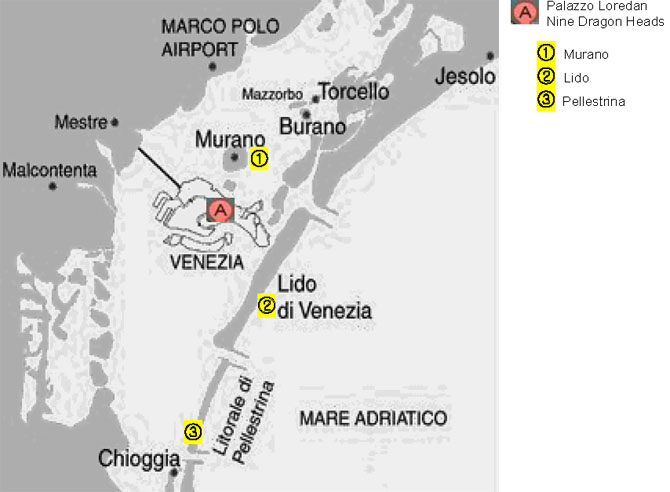
![]()
Jump into the Unknown
Period : 6th. MAY - 18th. JUNE
Set Up : 22nd . April - 5th. MAY
Pre-View : 6th ~ 8th
Opening : 7th. MAY
Venue : Palazzo Loredan dell'Ambasciatore
Coordinator : Magda Guruli. Park Byoung UK
Liaison : Alois Schild. Jeong Tae-Gyu
Participants
For the Artists who are invited NDH Collateral Event 2015 Venice Biennale.
Visual Art ( Installation, Objects, Performance, Video Art, Drawing ...etc )
Artists are responsible for bringing selected work and setting up their own work, also you can make an art work or installation directely in the exhibition hall and Garden during the set-up period. Artists should show developed works from the Open Air Symposium from the 3 islands, or works that are otherwise developed in relation to location. All proposed works must be discussed beforehand with Director and Commissioner, Please send your SHORT DESCRIPTION (information about the proposed art work, desired space, general description, technical details of installation etc) by @mail beforehand.
Please note Pallazo Loredan does not allow screws, nails or other forms of permanent fixing that might cause damage to any surface. Other forms of installation (such as self supporting frames or stands) must be devised for works.
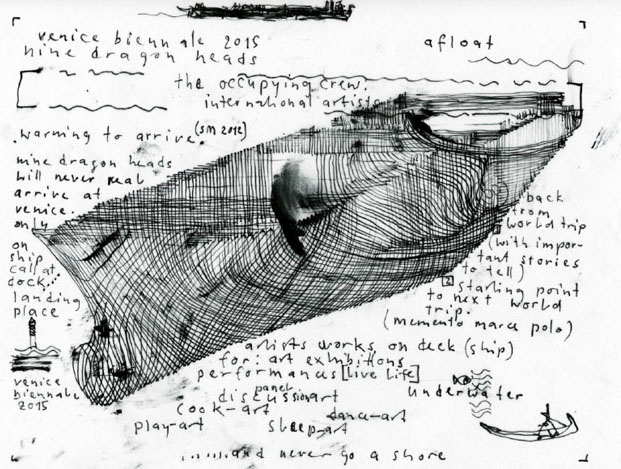

Divided two phases ;
Public Space
Period : 28th. April - 12th. May
Venue : 3 Islands ( Mrano, Lido. Pellestrina )
San Marco. Giardini. San Margherita, San Giovanni ..Etc
Coordinator : Jessy Rahman
Liaison : Pietertje van Splunter. Charlotte Parallel
Participants
Channa Boon & Collabotators
Harold De Bree & Mike Watson / Collaborators
Jessy Rahman & Qurtair ( Pietertje, Geeske, Thom Vink, Paul Donker)
Ali Bramwell
Erika Batdorf
Phil Dadson
Opening Week
Period : 6th - 8th. May
Venue : Palazzo Loredan dell' Ambasciatore
Coordinator : Jessy Rahman
Liaison : Pietertje van Splunter. Charlotte Parallel
Participants
Erika Batdorf
Inbok Trobos
Gordana Andelic Galic
Phil Dadson
Yusuf Hadzifejzovic
Channa Boon & Collabotators
Harold De Bree & Mike Watson / Collaborators
Jessy Rahman & Quartair Group
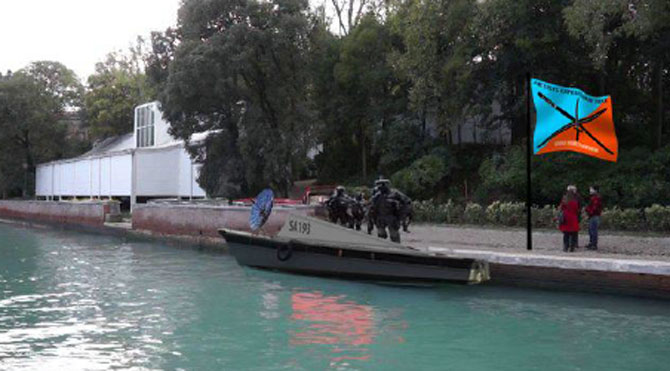
![]()
Period : 6th - 9th. May
Venue : Palazzo Loredan / 3 Islands
Coordinator : Ali Bramwell
Liaison : Gabriel Adams
Participants
Artists who are invited for Meetings on NDH
and who wish to participate in the Screening & Presentation
Keynote Speak
6th. MAY. Palazzo Loredan
Magda Guruli - Jump into the Unknown
Presentation - NDH 20 Years
8th. MAY. Palazzo Loredan
DMZ & JSA : Ali Bramwell
3 PAW : Annelise Zwez
Sarajevo Winter : Jessy Rahman
Chamagodo : Gabriel Adams
Daecheong Lake : Bedri Baykam
Nomadic Party 'PAO to PAO' : Phil Dadson
Nomadic Party 'Protests That Never Ends' : Denizhan Ozer
Nomadic Party 'GER to GER' : Aleksandra Janik & Magdalena Hlawacz
Island to Island
9th. MAY. 3 Islands (Murano, Lido. Pellestrina )
Keynote Speaker : Ali Bramwell
Artist Talk : Open to anybody who wishes to introduce his or her practice, by prior arrangement. Artist present their work (approxi 10min each) followed by free discussions and outlook on topics.
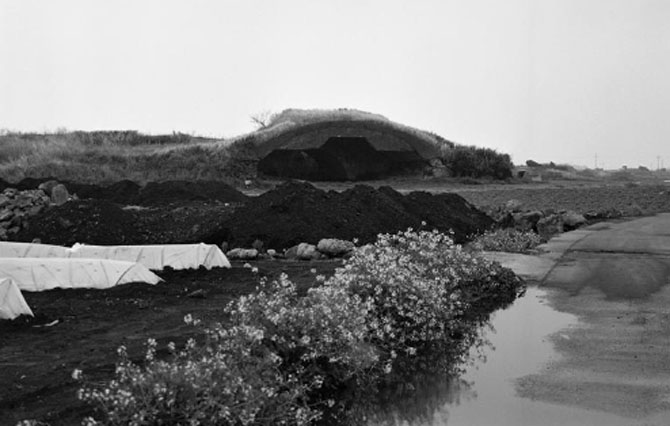

Period : 18th- 25th. OCT
Venue : Palazzo Loredan
3 islands ( Mursano. Lido. Pellestrina )
Venice University San Servolo Campus / TEN Center
Coordinator: Ali Bramwell, Gabriel Adams
Liaison : Luca Pes . Francesca Zennaro ( from Venice University )
Research expectation
Jump into the Unknown is similar in structure to previous NDH location specific symposia, with one key difference: it is expected that works will be researched in advance and planned. Please note that ephemeral, performance and process works in this case will not mean spontaneous or impromptu.
WORKSHOP
In line with the research expectation, as noted above, Artists should plan to make at least one independent site visit and attend a for NDH at 56th Venice Biennale 2015 will be developed over a series of site visits so that what is finally exhibited will have conscious an structured preliminary event workshop which will take place in October 2014 in Venice. For the overall conceptual cohesion of the project it is very important for us to go to Venice as a group, with a research and practical artistic process focus. The central idea is that works d thoughtful location influence on its development. We will also hold seminars with invited scholars and historians who have specific relevant local knowledge of the historical, political and natural environment of Venice and the regions.
Attending this workshop will be important because it will also be focussing on producing rapid response experimental testing work as hands on thinking, it is an important chance to refine your project ideas on location and solve some practical details with our support. It is expected that your project ideas may change and develop during this process. There will be a presentation built in at the end of the week to the whole group that will give us a chance to discuss conceptual practical and ethical issues. This presentation session will build overall project cohesion.
PROJECT DISCUSSION, CURATORIAL DEVELOPMENT AND SITE PLANNING
All planned projects for Venice 2015 must be approved in discussion with both the Director and Commissioner. During the workshop each participating artist/ group will have a personal meeting with the director and commissioner/s to discuss their project plan. These meetings will be one hour in length and take place by appointment schedule on the days of October 22 and 23 in Venice. Directly after the workshop project location maps will be drafted and final decisions made about floor plan of Palazzo Loredan.
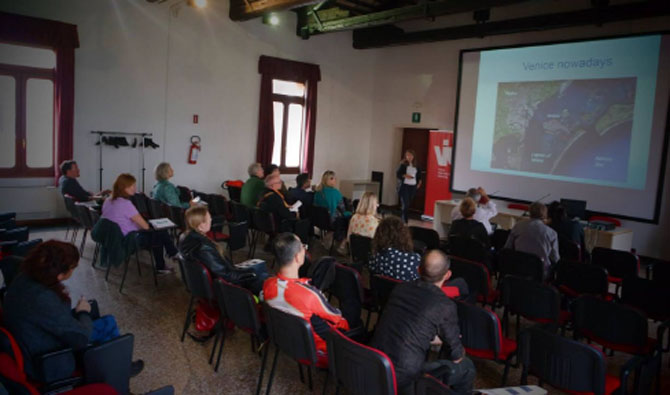
![]()
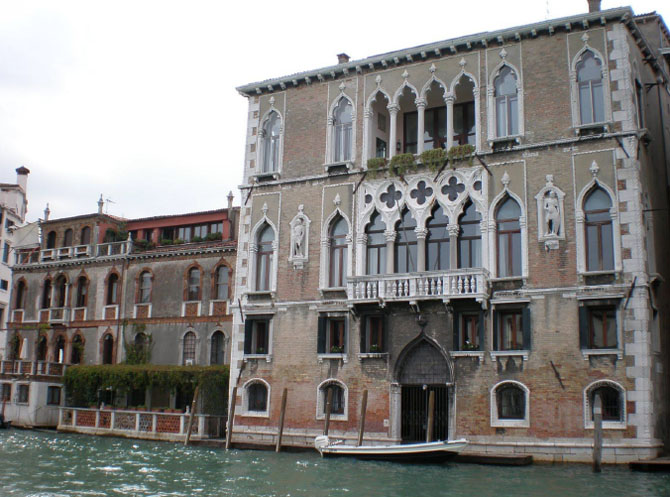
Palazzo Loredan dell'Ambasciatore was the host to the New Zealand National Pavilion at the 54th Venice Biennale, Ukraine Pavilion at the 55th Venice Biennale. It is a late 15th-century Gothic palace in Venice, Italy, that once belonged to the noble Loredan family. Located in the Dorsoduro sestiere (quarter), it was called "dell'ambasciatore" because it was the home of the ambassadors of the Austrian Empire to the Republic
Location
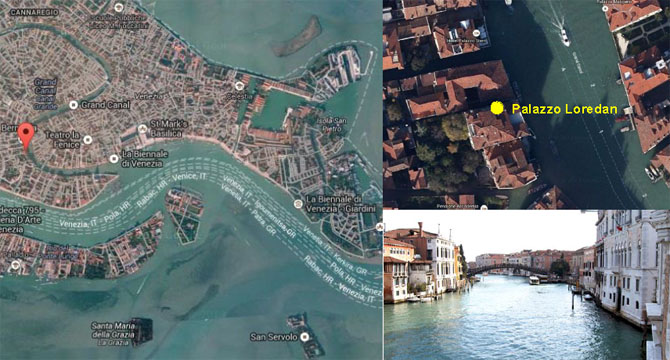
Outdoor Images
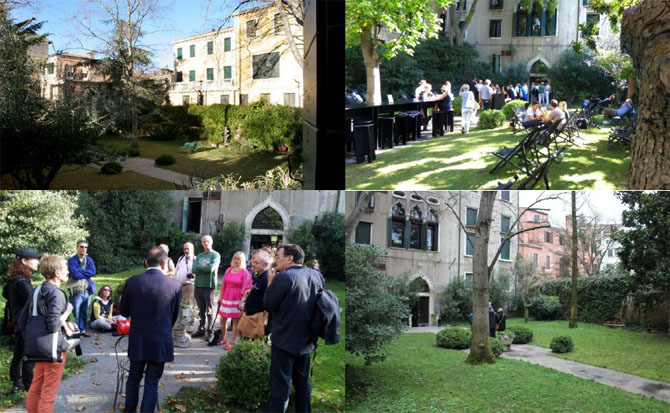
Indoor Images
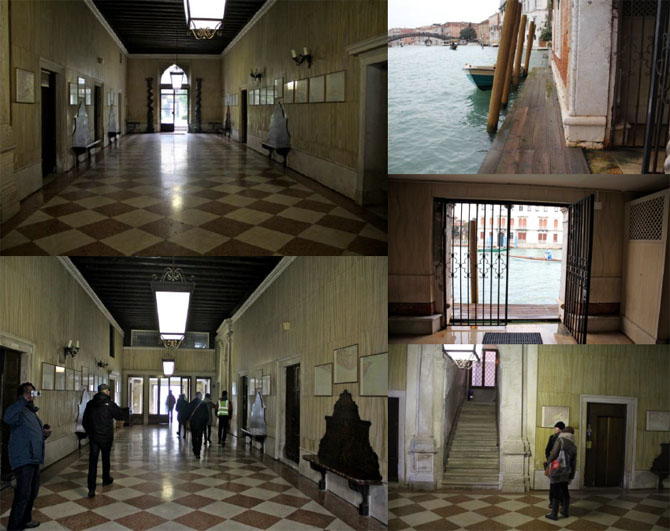
![]()
Palazzo Loredan dell'Ambasciatore
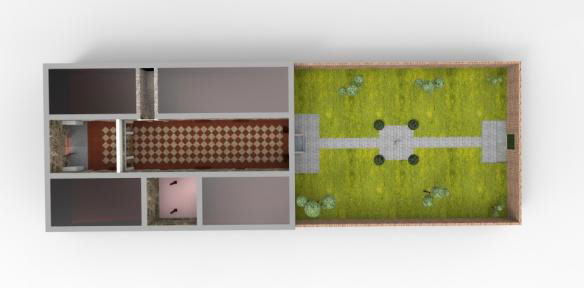
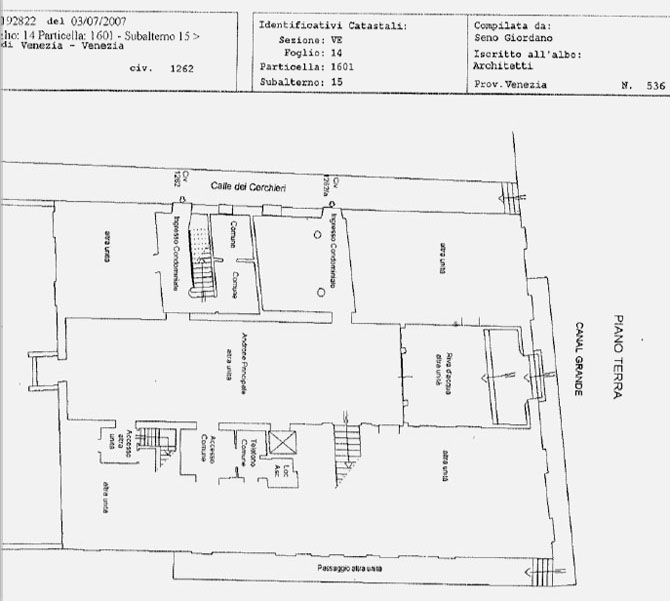

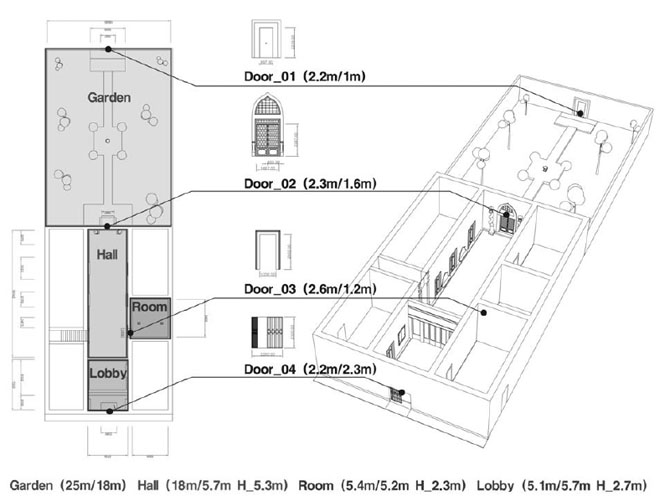

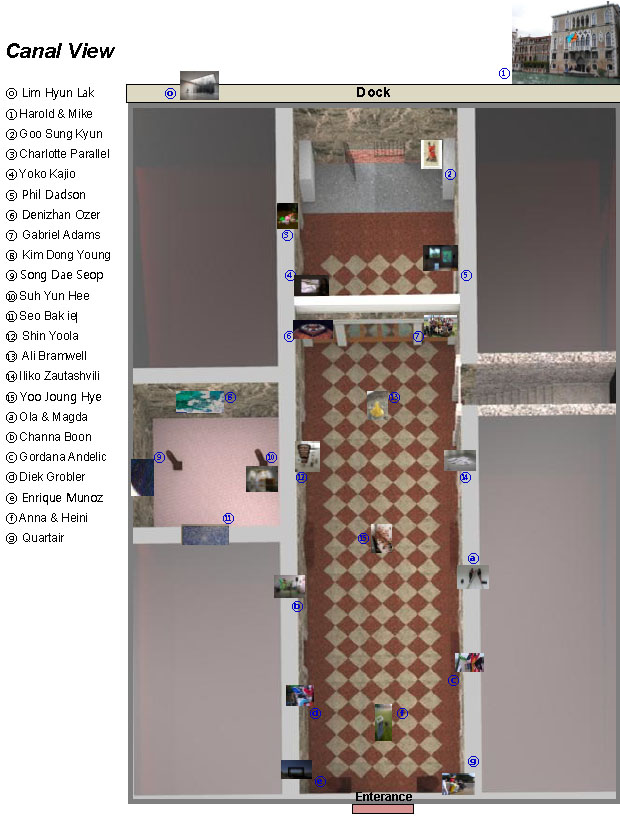

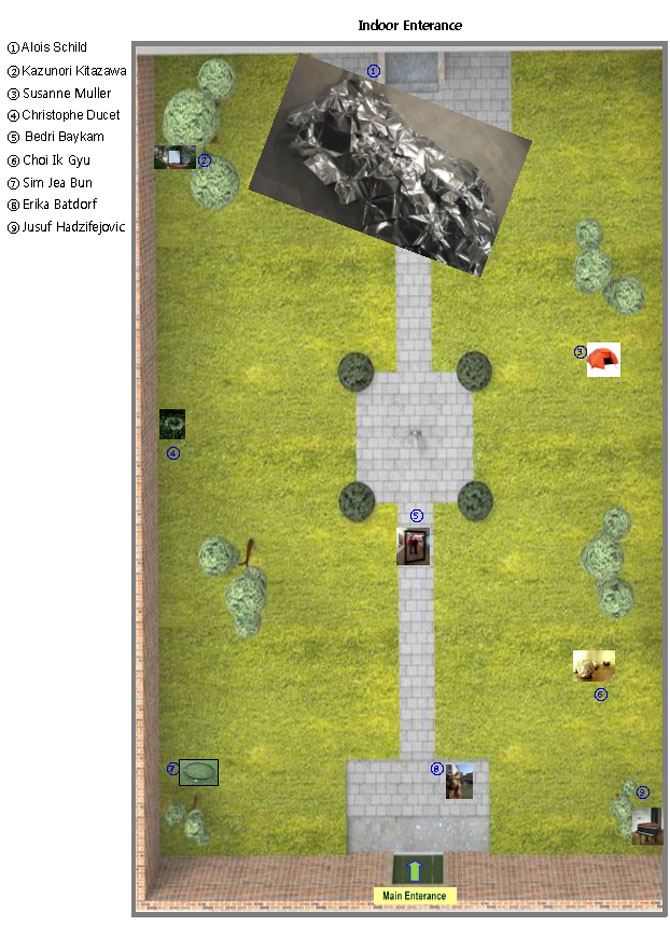
![]()
For YURT
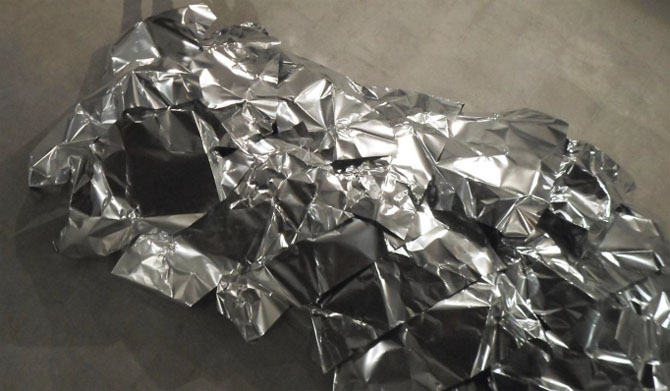
Installation : work by Alois Schild.
Materials is Metal Sheets, in the form which you can see in the pictures below.
The size of these yurts will be approxi 13 x 7 meters .
Height of the lateral wall 350cm .
Height of the center - about 5 meters.
Archive YURT - for the Documentation from 20 Years of NDH
The Yurt will contain documentation equipment : Beam Projector, Screen, Monitors,
|
Screening 1) DMZ & JSA Change Concept 2006 2) NDH in Sarajevo Sarajevo Winter 1996~2015 3) Nomadic Party Pao to Pao 2010 Protest that never ends 2012 Ger to Ger 2013 4) Chamagodo Tea & Horse Road 2011 5) Jump into the Unknown Resarch 3 Islands & Workshop |
|
![]()
